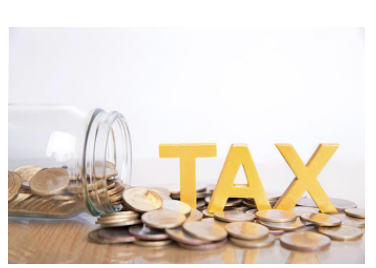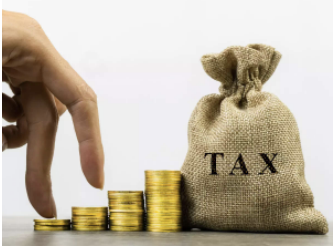
The important aspects that every tax payer should know
In order to report their income, deductions, and tax obligations, taxpayers are required to file an
income tax return with the government, often once a year. You can compute the amount of tax that is owed to the government or the potential tax refund from investments that save you money on taxes
by filing an ITR. According to several tax professionals, you can use the following strategies to maximise your tax returns after filing your income tax return. When taxes are paid in excess of the amount of tax actually assessed, an income tax refund typically results. The following options are available to taxpayers who want to optimise their tax refunds:

Every taxpayer should make an attempt to claim all allowable deductions and exemptions when
submitting their tax returns in order to minimise their tax obligations and, as a result, maximise
any potential tax refunds. The better ways Excess tax paid on account of TDS and TCS is one of the key
causes for issuing refunds.
As a result, the taxpayer may receive smaller refunds if there is a mismatch between the TDS and TCS amounts recorded in the records of the revenue authorities and those of the taxpayer. Therefore, taxpayers must reconcile any discrepancy between their tax records and Form 26AS/AIS/TIS and TDS/TCS. The taxpayers should make sure that the bank information is accurately provided when submitting the tax return, including the account number, IFSC code, etc. The taxpayer should therefore thoroughly validate the bank information.
Any tax return that has not been electronically verified is deemed faulty and will not be refunded. Claim all allowable deductions: Ensure that you have taken advantage of all allowable deductions under the Income Tax Act, including Section 80C deductions (for EPF/VPF, PPF, life insurance premiums, etc.) and Section 80D deductions (for health insurance premiums).
Make sure you have the appropriate paperwork and evidence to back up any exemptions or deductions you are claiming. Keep accurate records of your earnings, spending, investment activity, and other pertinent financial transactions. Before the conclusion of the fiscal year, evaluate your tax-saving investments and make any required revisions. This includes increasing payments to the National Pension Scheme (NPS), EPF/VPF, PPF, and other qualified programmes.

The key elements
Learn about the exemptions and benefits that are available to you, including the House Rent
Allowance (HRA), the Leave Travel Allowance (LTA), and medical reimbursements. Verify your eligibility for any tax credits, including the TDS (Tax Deducted at Source) credit and, if applicable, overseas tax credits. Make sure your tax return accurately reflects these credits. Consider speaking with a tax expert who can offer personalised guidance based on your circumstances if you have complicated financial conditions or have questions about maximising your tax refunds.
Consider speaking with a tax expert who can offer personalised guidance based on your circumstances if you have complicated financial conditions or have questions about maximising your tax refunds. Put money into tax-saving vehicles including Employee Provident Funds (EPF), Public Provident Funds (PPF), National Savings Certificates (NSC), and Tax-saving FDS (ELSS). Existence Insurance, etc. Your taxable income may be decreased thanks to these investments. Proceed with Honesty and smartness.
Obtain all permissible exemptions and deductions: Make sure you’ve used all of the exclusions
and deductions allowed by the income tax legislation. This includes write-offs for costs like
prescription costs, student loan interest, rent, mortgage interest, investments in tax-saving tools
like ELSS (Equity Linked Saving Scheme), premiums for insurance, etc. Check your tax filing status to be sure you’ve selected the best course of action. For instance, file under the old tax regime if you have several tax-saving investments (such as EPF, PPF, NSC, etc.), otherwise choose the
new tax regime.
The additional Make sure you utilise all of the tax credits that are accessible to you
because they directly lower your tax obligation. The actions below can be done for a swift issuing of the income tax refund once a return has been filed and a refund has been claimed in that return. A) Providing accurate banking information – The taxpayer must make sure that his income tax
return contains accurate bank information.
The IFSC code, bank name, and bank account
number are included in this data. Incorrect bank account information may cause failure and needless delay in the tax department’s delivery of a refund. B) Pre-validate a bank account – Only the pre-validated bank account will receive a refund. Additionally, a number of bank accounts may be pre-validated and designated for the issuing of income tax. The income tax site typically updates the pre-validation status in 10–12 working.

A combined tax statement called Form 26AS shows the tax credits that can be used with your
PAN (Permanent Account Number). It gives information on tax deducted at source (TDS) from
your income, which may include salary, interest, rent, and other types of revenue. Check to see if
the TDS listed on Form 26AS corresponds to your actual revenue. It is best to work out any
differences with the deductor or the income tax division.
Take advantage of the Section 80DDB deductions that are available for certain expenses, such as medical care for certain disorders. To accurately claim these deductions, make sure you have the required supporting documentation, such as medical bills and medications. The last words to maximise deductions and credits, it’s critical to keep up with tax legislation. You should also speak with a tax specialist for guidance that is specific to your circumstances. By navigating the complexity of the tax code and providing tailored advice, using the services of a qualified tax expert can help you maximise your tax refunds.







